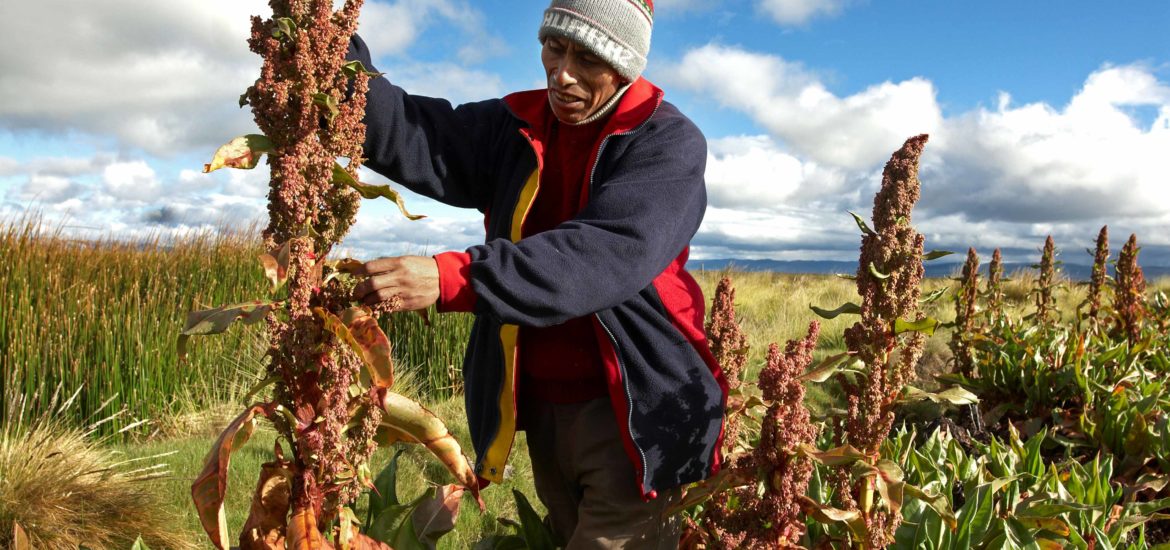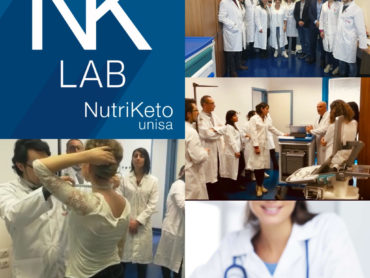South America populains, and in particular those of the Andean regions, had selected, before the Spanish conquest, a considerable number of plants for food purposes. In fact, in their vast empire, the Incas had developed an extremely diversified agriculture, suitable for the remarkable variety of ecosystems (from the arid coastal plain to the plateaus, to the rainforest); a profitable agriculture capable of satisfying the food needs of a population of around 12 million. Some of the cultivated plants, especially corn, potatoes and tomatoes, were imported by the Spanish conquerors and found fast and widespread, so as to vary the eating habits and agricultural in Europe and later in the rest of the world, others, disdained by “conquistadors” went irretrievably lost when their agriculture fell into disuse, while others continued to be cultivated and sold in the markets of small villages on the Andean highlands.
Quinoa (Chenopodium quinoa) has been used by Andean populations for food purposes since prehistoric times. In the diet of the ancient peoples of America quinoa represented the almost exclusive alternative to animal proteins, in fact the consumption of meat, milk and eggs was not common among the Campesine populations and in many areas quinoa was the main protein component of the diet. During the colonization the use of quinoa was almost exclusive of the native societies, being considered the grain as a food of the native Indians what related to a low social position
Botanical description: Annual herbaceous plant of 0.5-2 m height, with an upright posture. The seeds adhering to the pericarp of the fruit are lenticular, with a diameter of about 1.5 mm.
Vulgar names: Canigua, Jupha, Kiuna, Quinoa (Bolivia); Cenizo, Quinoa, Subo (Colombia); Quinhua, Quinoa (Chile), Quinoa (Ecuador); Cañhiua, Quinua, Quinoa (Peru).
Geographical distribution: It is a pre-Columbian plant whose cultivation is carried out in drastic climatic conditions at altitudes above 3000 m, it meets in the high regions of Bolivia, Chile, Ecuador and Peru and in the south of Colombia. It is native to the western slopes of the Andes.
Ecology: Quinoa is a plant highly resistant to variable climatic and altitude conditions, it grows both at sea level, in the regions of the Chilean coast, and at heights of 4000 m in the Bolivian Andean regions, it tolerates abrupt changes in temperature from -1 ° C at 35 ° C and is resistant to cold and freezing, it prefers soils with an acidity between pH 6 and 8.5.
Food Uses: The edible part is represented by the seeds used for the preparation of small loaves called “quispiña”, soups and fermented beverages. The by-products of the quinoa, stems, leaves and ears are used in the feeding of livestock producing a feed with high nutritional value, excellent digestibility and easy storage.
Medicinal Uses: Preparation from the seeds of a viscous paste used in cataplasm for dislocations and bone dislocation, decoctions of the fresh leaves used as anti-inflammatory.
The chemical composition: protein, lipid and carbohydrate amounts is comparable to that of the most common cereals such as wheat and corn. The protein content (14%) is very interesting as well as the nutritional value of proteins with a good content in essential amino acids and with high values found for sulphured amino acid lysine and aromatic amino acids. The high content in polyunsaturated fatty acids (72.5%) compared to saturated fatty acids (22.75%) can ensure a good activity in the prevention of hypercholesterolemia and cardiovascular diseases. Many specialists do not doubt in defining quinoa as “super wheat” because it equals and in many cases exceeds important cereals and products of animal origin in nutritional substances, proteins and amino acids. Quinoa has been classified as the only plant food that has all the essential amino acids; according to studies and essays from the National Aeronautics and Space Administration (NASA), through the Controlled Ecological Life Support System (CELSS) it is argued that quinoa possesses desirable qualities for the astronauts diet system in space. The grain qualified by CELSS for its high protein value and rich in amino acids, combined with the traditional values of crops such as soy and wheat, results in an adequate composition of amino acids, able to meet the needs of human beings during travel long-lasting spaces.
Its caloric value is greater than that of egg and milk and is comparable only with that of meat; this makes it an appropriate food and suitable for consumption in areas and cold areas. Its protein content is higher in cereals such as wheat, rice, corn and oats and is ideal as a surrogate for proteins of animal origin. In addition, quinoa is rich in minerals such as phosphorus, potassium, magnesium and calcium, among others, to a greater extent. Quinoa is rich in magnesium which helps the relaxation of blood vessels, preventing them from constricting and dilating. It is a good source of vitamin B2 (riboflavin) and vitamin E. It has been shown that its consumption helps reduce the frequency of migraine attacks. Some studies have shown that in celiac (gluten intolerant) quinoa promotes the regeneration of gluten tolerance. Recent research suggests that quinua contains flavonoids, antioxidant and antiplatelet agents and phytoestrogens, compounds that prevent or reduce chronic diseases such as osteoporosis, arteriosclerosis, breast cancer and other changes in postmenopausal women caused by deficiency of estrogen.
Production: the main producing countries of quinua are Bolivia, Peru and Ecuador but its cultivation extends to Chile, Argentina, Brazil and other Latin American countries. At the same time, for many years it has been experimenting and developing its cultivation in the countries of Europe, Asia, Africa, Australia and North America. The production of quinua is being expanded to different geographical areas of the planet for its extraordinary characteristics of adaptation to different altitudes and climatic conditions.









